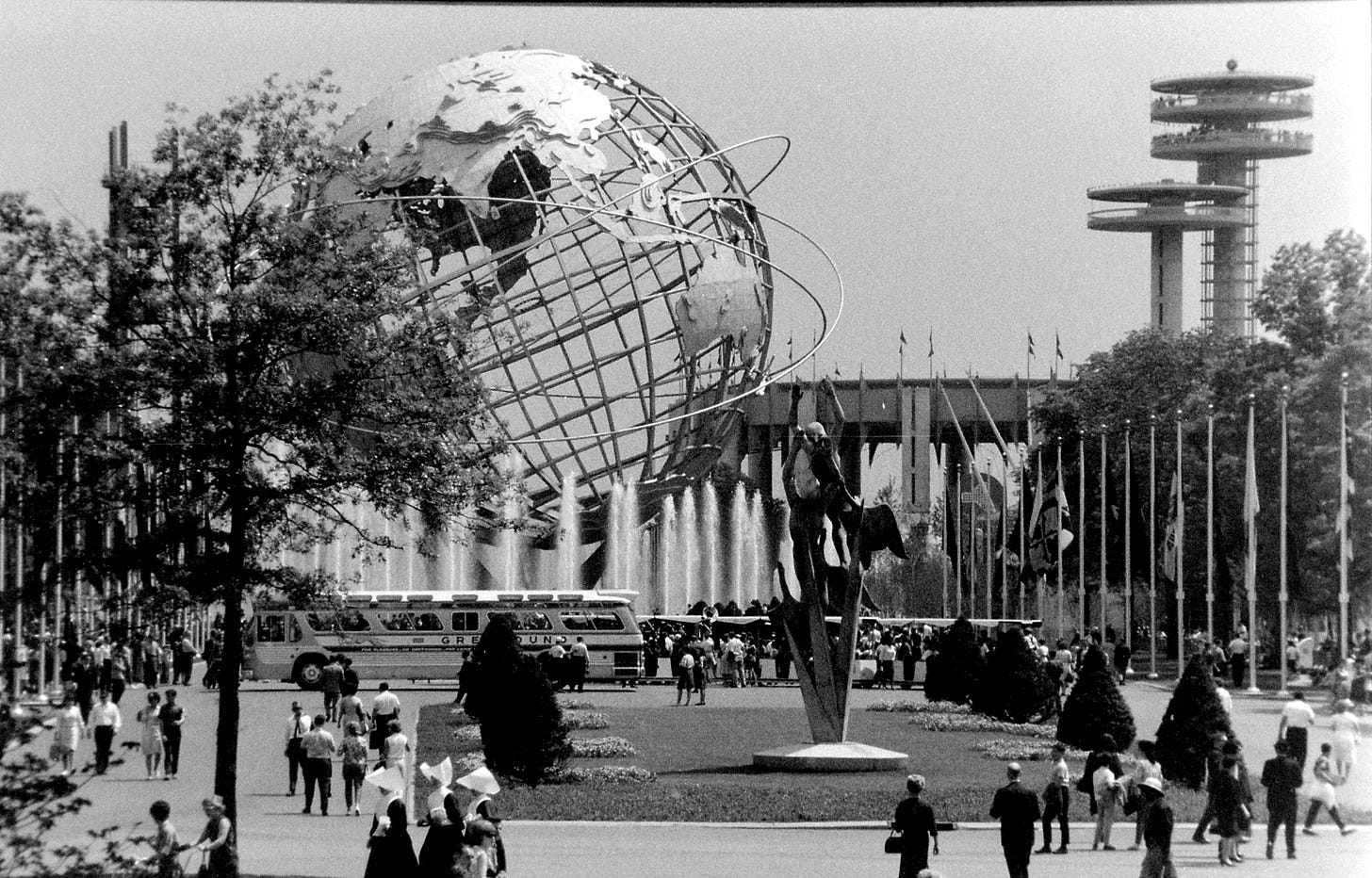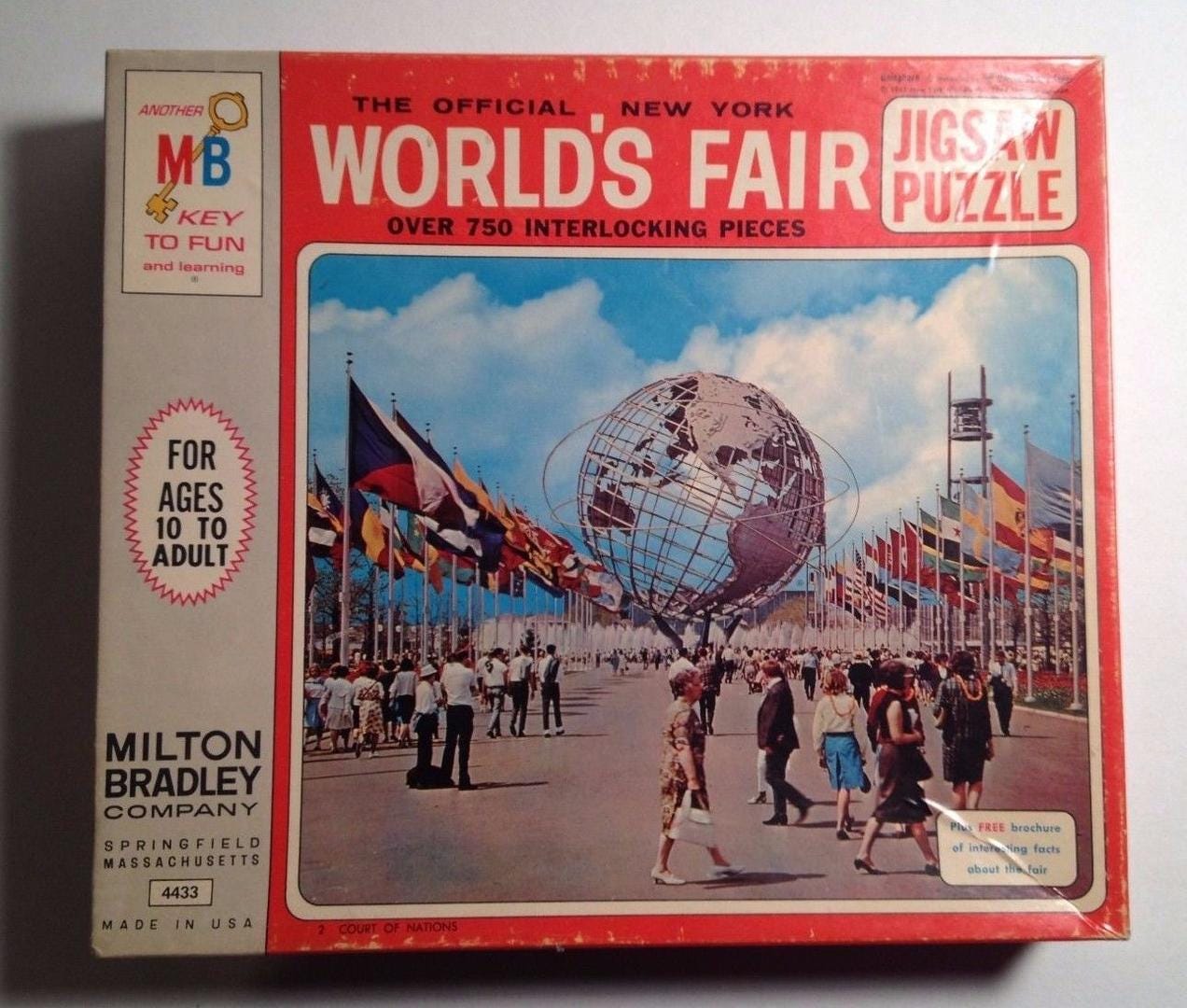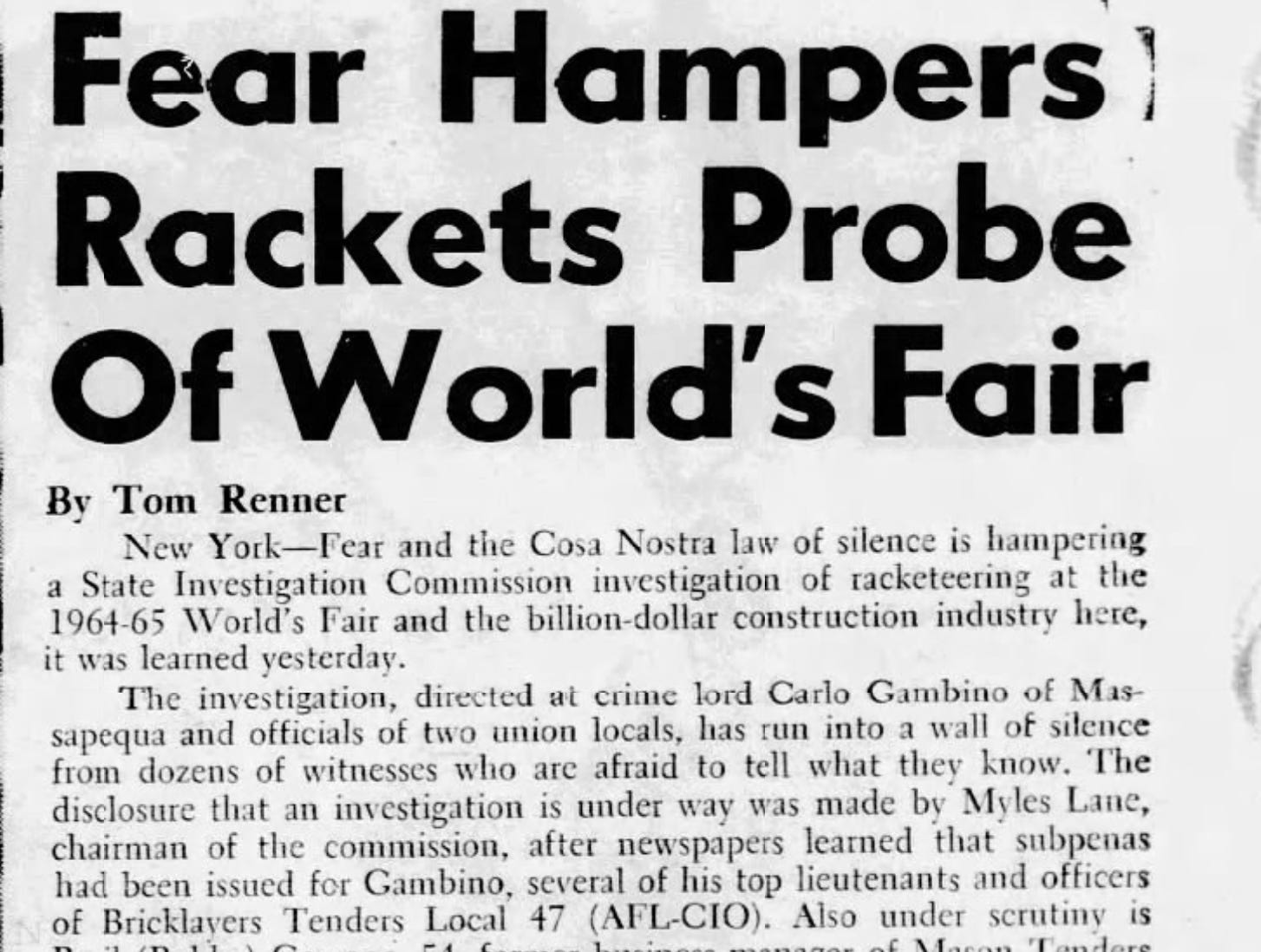Where in the World Is the World's Fair?
It's happening right now—but can you tell me where?
What do you think about the new World’s Fair?
What’s that you’re saying? You haven’t heard about it?
Well, I’ll cut you some slack. I hadn’t either, until I made a point of finding out what happened to the World’s Fair.
If you want to support my work, the best way is by taking out a paid subscription (just $6).
Not long ago, these were huge events. More than 50 million people attended the 1964 New York World’s Fair, which covered 646 acres with expositions, performances, food, and activities from 80 nations and 350 companies.
It wasn’t just a theme park. This was a gateway into our happy shared future. And everybody was invited.

The Olympics were happening at the same time, but the World’s Fair was a bigger draw. Like the Olympics, the New York exposition created goodwill between countries, but it also did much more—it showcased new technology and celebrated different ways of life.
It’s a small world after all, announced a famous Disney song—which made its debut at the event. This multilingual tribute to togetherness perfectly captured the ethos of a World’s Fair.
I was just six years old when the Fair opened—and there was no chance that my parents would travel from our home in Los Angeles all the way to New York to attend. But my mother did purchase an “official” World’s Fair jigsaw puzzle, and we worked on it together.

Just doing that made me feel part of the vibe.
And it was a powerful vibe. The 1964 World’s Fair promoted an attitude of total optimism about the future. The message couldn’t be clearer: Life will be getting better and better. Technology is our friend. And so are all the nations of the world.
That happy optimism about the future is gone now—kaput! And even the phrase “World’s Fair” has been replaced.
We are told to call them expositions now. And at Expo 2025—which opened seven weeks ago in Osaka, Japan—the theme is saving lives. Instead of international cuisine, music, and goodwill, the emphasis will be on sanitation, diet, disease, exercise, and other sober topics.
Hey, I love sanitation as much as the next person. But I really don’t see a Disney song in that.
Will tourists flock from all over the world to learn about waste reprocessing? I guess we will find out.
But what happened to the old World’s Fairs, built on optimism and global love and celebrating our happy future together? Don’t we need those anymore?
By my reckoning, we need them more than ever.
These gatherings continue to benefit us long after they’re gone.
My favorite location in San Francisco is the Palace of Fine Arts, built for the 1915 Panama–Pacific International Exposition. When my future spouse Tara made her first visit to the West Coast, this is where I took her on our first outing.
You couldn’t build something like this in San Francisco nowadays. You would never survive the paperwork, the commissions, the preliminary reports, and other bureaucratic obstacles.
But there it is—and all because of a World’s Fair.
Of course, most of that exposition got torn down. Here’s what it looked like back in 1915.

Some of the past World’s Fairs created such impressive buildings that conspiracy theorists believe that aliens from outer space actually constructed them.
My other favorite SF locale is the Golden Gate Bridge, where I proposed to Tara a few months later. [Spoiler alert: She said yes.] When the San Franciscans completed the bridge, 88 years ago, they celebrated the occasion with another World’s Fair—the Golden Gate International Exposition of 1939.
They worked hard to finish both the Golden Gate Bridge and the Bay Bridge in time for the Exposition. That’s because events like this stir up civic pride, and motivate city leaders to tackle huge projects.
There hasn’t been a single public works project in San Francisco as ambitious or magnificent as that beautiful bridge in the intervening nine decades. Maybe they need another World’s Fair to energize the community. They certainly need something.
Why don’t these things happen anymore?
For a start, there are a hundred reasons not to do them—and a hundred interest groups who want the cash and resources to go elsewhere.
And the deeper your probe, the uglier it looks. The 1964 New York World’s Fair was expected to generate a $50 million surplus—but instead lost more than $20 million.
How can you draw 200,000 people per day and still lose money? But this is, after all, New York—hence many people were feeding at the trough of the World’s Fair.
Consider the case of parks commissioner Robert Moses, who lobbied for the Fair, and then took over as President of the project—paying himself more than a million dollars during his tenure.
By comparison, when New York Yankee Roger Maris broke Babe’s Ruth’s record for most home runs in a season in 1961, he got paid $38,000. I think it’s safe to say that Robert Moses was better at hitting home runs in New York back then—at least if you judge them by the payouts.
Accusations of fraud, racketeering, and lax oversight eventually led to a full-scale investigation. The Gambino crime family and various union officials were allegedly involved.
But guess what?—nobody wanted to talk.
But I can’t just blame NY gangsters. Expo 67 in Montreal also lost money, despite surpassing its attendance goals.
The result was inevitable. Other cities were reluctant to emulate New York. As a result, no comparable exposition has taken place in North America since that time.
The bureaucracy imposed by the global regulating body—the Bureau International des Expositions—doesn’t help. This organization, founded in 1928, refused to authorize the 1964 New York World’s Fair, and it hasn’t approved any expositions in the US during the last 40 years.
But that governing body has approved:
Expo 2020 in Dubai
Expo 2025 in Osaka, Japan
Expo 2030 in Riyadh, Saudi Arabia
The motto of the 2030 event will be “Together for a Foresighted Tomorrow.” I don’t think I’ve encountered the word foresighted in a sentence before—but they play by different rules in Saudi Arabia.
By the way, my dictionary says that the word means cautious, heedful, prudent. I guess those are our guiding values in 21st century—but I think a World’s Fair deserves something more inspiring.
Okay, I’m a hopeless idealist, but I’d like to see a real global celebration. Why can’t we have a World’s Fair on the old grand dimensions—full of optimism, hope, and goodwill? We once were capable of believing in those things and even held the biggest party on the planet to share them with everybody.
Surely if we did it once, we could do it again?






I knew about Expo 2025 happening right now because...I'm going next week. There are pavilions from many countries, with cuisine, music, etc., so I would say your characterization of this event seems unfair (I'll have to see how unfair when I go). It's been big news in Japan, and outsiders not paying attention to what's happening in Japan is unfortunately nothing new. Expo 1970, the previous one in Osaka, had over 60 million attendees.
I do agree, though, with the general sense that people (or maybe Americans) have stopped being optimistic about the future. The best piece I've read on this theme is "The world of tomorrow" by Virginia Postrel, which also talks about World's Fairs.
https://worksinprogress.co/issue/the-world-of-tomorrow/
Vancouver hosted the World Expo in 1986. It was a big deal here. Not sure if this is symbolic, but one of the fun things at the Expo'86 was a floating McDonalds known as McBarge. And Just a couple weeks ago, McBarge sank. https://www.msn.com/en-us/food-and-drink/world-cuisines/the-devastating-fate-of-mcdonald-s-floating-restaurant-the-mcbarge/ar-AA1FpjoX
I went all the way down under to Brisbane to see Expo'88 after finishing my University degree. Back when there were student travel deals and International student cards. Lots of fun.